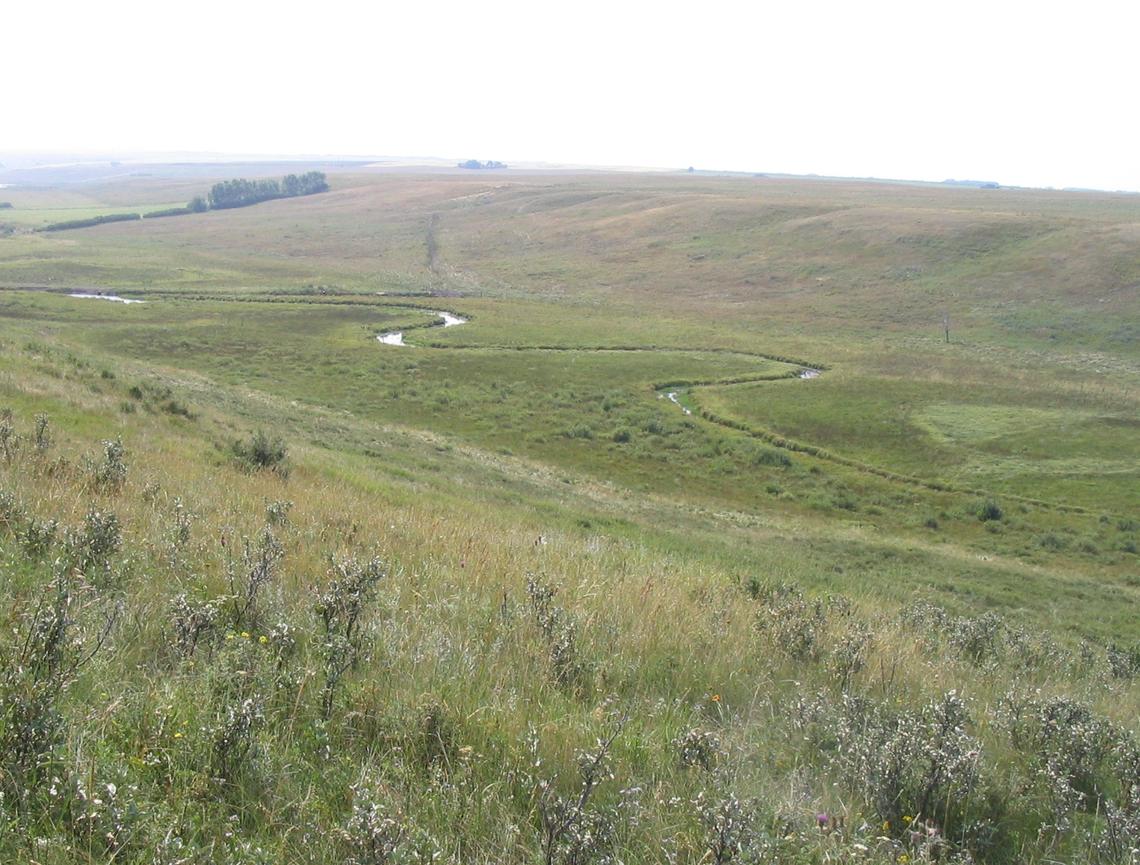Research
Prairie Hydrology
Canadian prairies is a unique environment characterized by a cold semiarid climate and glaciated terrains, resulting in hydrological processes that are unique in the Canadian prairies. For example, despite the cold winter and dry summer, prairie creeks flow year around providing essential habitats of aquatic species. This is only possible because of groundwater inputs from numerous stream-side springs sustaining the baseflow of streams. The photo shows the lush vegetation in the valley corridor of West Nose Creek, located north of Calgary. The riparian corridor like this is critically important for the prairie ecosystems, and considered an example of groundwater-dependent ecosystem (GDE). Our group has been studying the hydrological interactions in the integrated system in the prairies consisting of atmosphere, land surface, soil, groundwater, and surface water over the past two decades. In particular, our work on prairie wetland hydrology have generated a body of knowledge that is guiding wetland management policies in Prairie Provinces.
This study is conducted as part of Prairie Water program.

West Nose Creek near Calgary
